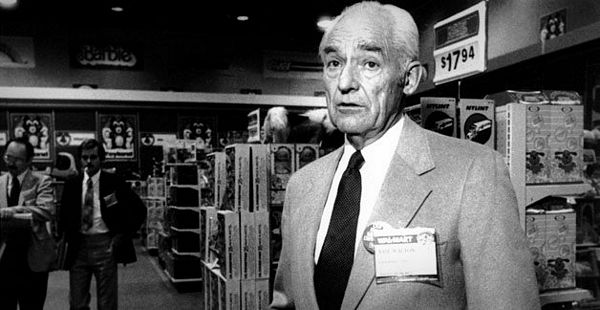
Sam Walton, the iconic founder of Wal-Mart, loved retailing and pursued it with boundless energy. He was famously frugal and devoted to the concept of beating merchandise prices down as part of the trademark “everyday lower prices” promise to customers. Walton once wrote, “A lot of what goes on these days with high-flying companies and these overpaid CEOs, who’re really just looting from the top and aren’t watching out for anybody but themselves, really upsets me. It’s one of the main things wrong with American business today.”
Despite being America’s richest man, Sam Walton flew first class only once in his life on a flight from South America to Africa. Wal-Mart did not have a corporate jet until the retailing giant was approaching $40 billion in sales. Walton’s “corporate car” consisted of a red pick-up truck. Bernie Marcus, the co-founder of Home Depot, once recalled having lunch with Sam Walton, “I hopped into Sam’s red pick-up truck. No air-conditioning. Seats stained by coffee. And by the time I go to the restaurant, my shirt was soaked through and through. And that was Sam Walton—no airs, no pomposity.”

Under the leadership of Sam Walton, Wal-Mart stuck to its small-town roots. “Every time Wal-Mart spends one dollar foolishly, it comes out of our customers’ pockets,” Walton preached wherever he went. Some particulars on how Sam Walton’s homespun frugality is still ingrained in Wal-Mart’s culture:
- As part of corporate policy, Wal-Mart employees are required to be thrifty as well. They were required to sleep two to a room in properties of Holiday Inn, Ramada Inn, Days Inn, and other economy hotel brands. They are encouraged to eat in family restaurants.
- At a 2007 convention of 250 CEOs of suppliers, Wal-Mart’s third CEO Lee Scott famously raised a pen he had picked up from the Embassy Suites hosting the conference. He declared that Wal-Mart asked its business travelers to bring pens and notepads from their hotel rooms (yes, with the hotels’ logos) back to their offices and use them as office supplies. With thousands of business trips, the Wal-Mart home office in Bentonville probably accumulated thousands of dozens of pens.
- On business or purchasing trips to New York City, Wal-Mart employees would avoid taking cabs, and instead walk or take subway wherever possible.
Such corporate-instilled policies to drive frugality across the Wal-Mart organization were more about instilling in its employees the miserly, no-waste, keep-costs-down attitude than about saving, for instance, $10,000 or more on the cost of office pens every year. Wal-Mart aimed to limit purchasing overhead expenses to 1 percent of their purchases.
Recommended Reading on Sam Walton and Wal-Mart
‘Sam Walton: Made In America’ by Sam Walton
- ‘The Wal-Mart Way: The Inside Story of the Success of the World’s Largest Company’ by Don Soderquist
- ‘Sam Walton: The Inside Story of America’s Richest Man’ by Vance H. Trimble
- ‘The Wal-Mart Effect: How the World’s Most Powerful Company Really Works–and How It’s Transforming the American Economy’ by Charles Fishman
- ‘Wal-Mart: The Bully of Bentonville: How the High Cost of Everyday Low Prices is Hurting America’ by Anthony Bianco
Frugal in what they pay their employees too. Then they’ll fire you if you get sick and miss a few days. Employees are a dime a dozen.